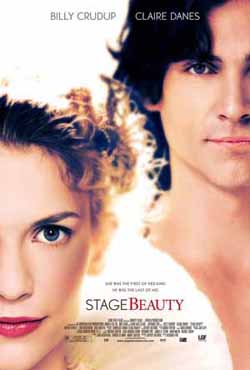 |
| Colin Firth and Joseph Fiennes in Shakespeare in Love |
Viola De Lesseps: Gwyneth Paltrow
Philip Henslowe: Geoffrey Rush
Hugh Fennyman: Tom Wilkinson
Lord Wessex: Colin Firth
Tilney: Simon Callow
Queen Elizabeth: Judi Dench
Nurse: Imelda Staunton
Ned Alleyn: Ben Affleck
Richard Burbage: Martin Clunes
Christopher Marlowe: Rupert Everett
Ralph Bashford: Jim Carter
John Webster: Joe Roberts
Director: John Madden
Screenplay: Marc Norman, Tom Stoppard
Cinematography: Richard Greatrex
Production design: Martin Childs
Film editing: David Gamble
Costume design: Sandy Powell
Music: Stephen Warbeck
Posterity is a bitch. Winning a best picture Oscar doesn't necessarily fix a film permanently in the hearts and minds of moviegoers or film historians. Who today, for example, thinks that How Green Was My Valley (John Ford, 1941) was a better film than Citizen Kane, the Orson Welles masterpiece that it beat for best picture Oscar? And even more recent Oscar history is littered with dubious choices, most notably Paul Haggis's Crash, which was chosen as best picture of 2005 over Ang Lee's epochal Brokeback Mountain. Almost overnight, the tide began to turn against John Madden's Shakespeare in Love, in large part because it was a surprise winner over the presumed front-runner, Steven Spielberg's Saving Private Ryan. As time has passed, Gwyneth Paltrow's best actress win for Shakespeare in Love has been questioned, too, partly because Paltrow's subsequent acting career has done nothing to maintain her reputation and her dabbling in fields such as country music, fashion, and off-beat New Age medicine and diet has made her look like a giddy dilettante. Even the fall of Harvey Weinstein cast a dark shadow over Shakespeare in Love, which he helped produce for his company, Miramax, and for which he managed an extensive Oscar campaign. But watching the film last night, I found myself caught up once again in its witty imagining of Shakespeare's life and milieu, the sexiness of its romantic intrigue, and yes, Paltrow's skillful performance of what is essentially four roles: Viola De Lesseps, Thomas Kent, and both Romeo and Juliet. It's a charming tour de force that makes me wonder what brought it out of her and what subsequently made her crash and burn. Much of the success of the film, however, lies not in its uniformly good performances or in John Madden's direction, but in the Oscar-winning screenplay by Marc Norman and Tom Stoppard. I suspect the latter, who had already demonstrated his intimate knowledge of Shakespeare in the play Rosencrantz and Guildenstern Are Dead, is most responsible for a screenplay that can attract the casual moviegoer and entertain English majors at the same time. Some of its jokes go over a lot of the audience's heads, such as the revelation that the bloodthirsty, sadistic street urchin who hangs around the playhouse is named John Webster. The character is just the right age to grow up to write those hair-raising Jacobean plays The Duchess of Malfi (1612) and The White Devil (1614), but not knowing that doesn't matter much to the success of the film. Shakespeare in Love is never, as its central character would put it, "caviar to the general." Is it a better film than Saving Private Ryan? Or is it just smaller but cleverer and the temporary beneficiary of aggressive promotion? That bitch posterity will be the final judge.

